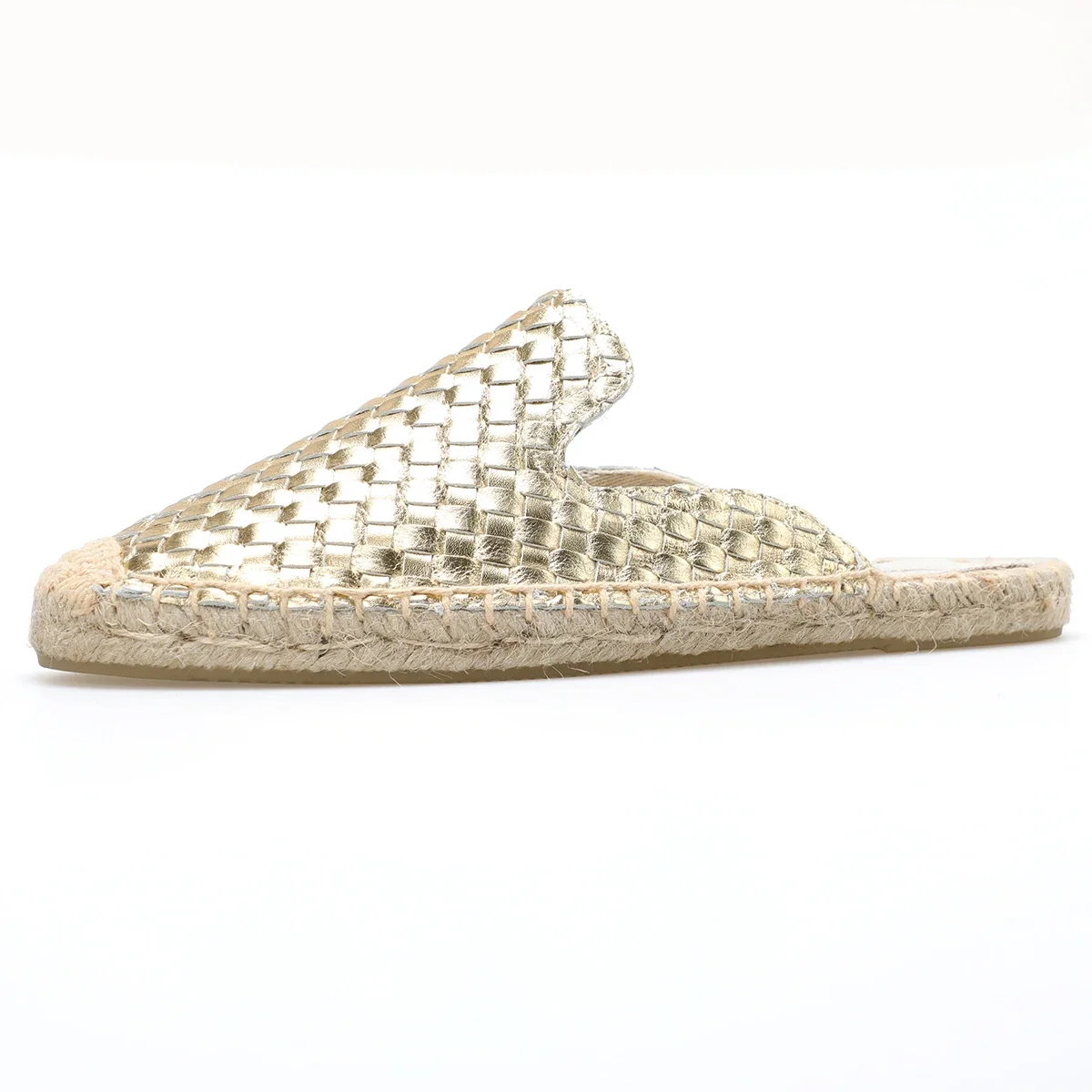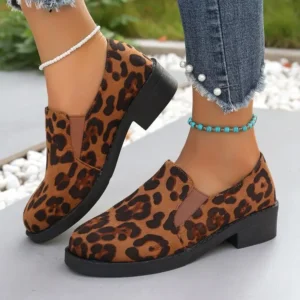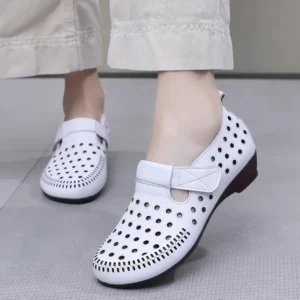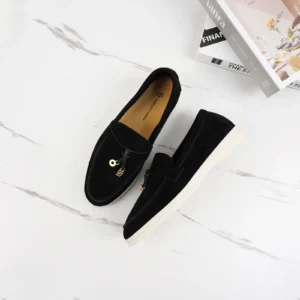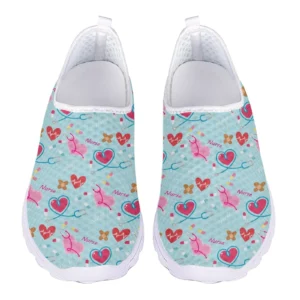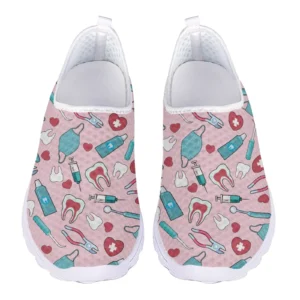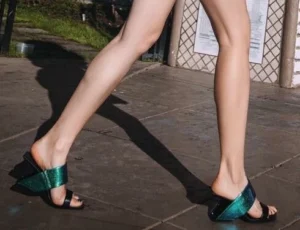What Are Open-Back Loafers and How They Define Modern Comfort
Open-back loafers represent a distinctive style of footwear characterized by their heel-free design that leaves the back of the foot exposed. Unlike traditional loafers that fully encase the foot, these modern alternatives feature an open heel area while maintaining the classic front design elements that make loafers instantly recognizable.
These versatile shoes go by several names in the fashion world – mules, slides, or backless loafers – but all share the same fundamental structure: a covered toe and vamp with an open heel that allows the wearer to slip their foot in without any rear support structure. The defining characteristic is this absence of material at the heel, creating both a unique silhouette and practical benefits.
The structural difference between open-back designs and traditional womens loafer mules significantly impacts both style and function. While traditional loafers provide complete foot coverage with a closed heel counter for stability, open-back versions prioritize ease of wear and ventilation while maintaining the classic loafer’s sophisticated front appearance.
This modern interpretation of the classic loafer has gained tremendous popularity by striking a perfect balance between refined style and practical comfort. The evolution from traditional closed designs to these more breathable alternatives reflects changing priorities among consumers seeking footwear that can transition seamlessly across various settings.
Understanding the structural distinctions between open-back vs traditional loafers helps appreciate why these styles have become staples in contemporary wardrobes – they offer the polished appearance of loafers with enhanced comfort and breathability benefits that meet modern lifestyle demands.
The Science Behind Breathable Footwear
Breathability in footwear refers to a shoe’s ability to allow air circulation, manage moisture, and regulate temperature around the foot. This seemingly simple concept actually involves complex physiological and material science considerations that directly impact comfort and foot health.
Our feet contain approximately 250,000 sweat glands and can produce up to half a pint (237 ml) of perspiration daily. This moisture production serves an important purpose – helping regulate body temperature – but trapped moisture inside footwear creates discomfort and potential health issues. Proper breathability addresses these natural physiological needs by:
- Facilitating continuous air exchange between the foot environment and external atmosphere
- Wicking away moisture from the skin surface to prevent dampness
- Allowing heat to escape rather than build up inside the footwear
- Maintaining an optimal microclimate around the foot
When shoes lack adequate breathability, several problems can develop. Excess moisture creates friction that leads to blisters and irritation. The warm, damp environment becomes ideal for bacterial and fungal growth, potentially causing odor and infections. Studies have shown that non-breathable footwear can increase foot temperature by up to 9°F (5°C) during normal activity, creating significant discomfort.
Several factors influence a shoe’s breathability performance, including:
- Material composition and porosity
- Construction techniques and ventilation design
- Amount of surface area coverage
- Lining and insole materials
- Overall fit and internal volume
This scientific understanding of breathability forms the foundation for evaluating how specific design elements – like an open back – contribute to overall foot comfort and health. The proper balance of these factors creates footwear that supports the foot’s natural processes rather than interfering with them.
How Open-Back Design Creates Superior Ventilation
The open-back design of mule loafers creates a ventilation advantage through a surprisingly simple but effective principle: unrestricted airflow. By eliminating the material that typically covers the heel and ankle area, these shoes fundamentally change how air circulates around the foot.
In traditional closed-back footwear, air exchange is limited to what can pass through the upper material or enter from the top opening. This creates a semi-enclosed environment where heat and moisture can become trapped. Open-back designs, however, introduce a permanent airflow channel at the rear of the shoe that functions like a ventilation port.
This structural difference creates a chimney-like effect where:
- Fresh air enters continuously from the open back
- Air circulates more freely around the entire foot
- Warm air naturally rises and exits through the back opening
- Heat dissipates more efficiently from the foot’s surface
The ventilation improvement is substantial – open-back designs typically expose 20-30% more foot surface to direct air contact compared to closed alternatives. This significantly enhances the natural cooling process of the foot through evaporation.
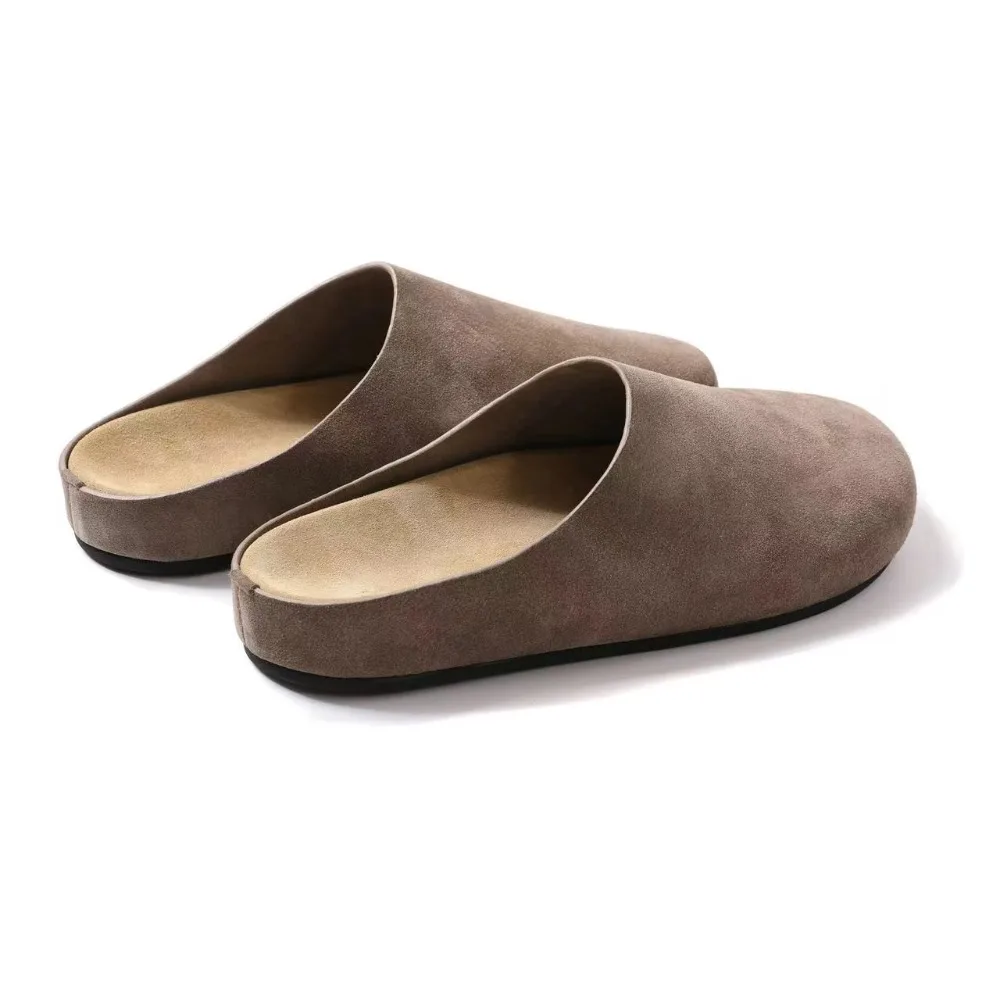
The physics of this design advantage is particularly noticeable during movement. Each step creates a natural pumping action that draws fresh air in and expels warm air out, almost functioning as a passive ventilation system powered by your normal walking motion. This dynamic airflow helps maintain more consistent temperature and humidity levels around the foot.
For professional settings where comfort remains important, these ventilation benefits can be especially valuable. Many professional office loafer outfits incorporate open-back styles specifically for this breathability advantage during long workdays. The open design allows for better air circulation while still providing the polished appearance expected in business environments.
Premium Materials That Enhance Breathability in Open-Back Loafers
While the open-back design naturally improves ventilation, the material selection plays an equally critical role in determining overall breathability performance. Premium open-back loafers combine structural ventilation advantages with carefully selected materials that maximize comfort through enhanced breathability.
Premium Leather Options
Full-grain and top-grain leathers stand as the gold standard for breathable luxury footwear. These premium materials offer natural porosity that allows microscopic water vapor molecules to escape while maintaining structural integrity. The breathability characteristics of quality womens leather flat loafers come from:
- Natural fiber structure that allows gradual moisture transmission
- Pore patterns that facilitate micro-ventilation
- Progressive breaking-in that enhances comfort and flexibility
- Perforated varieties that introduce additional ventilation channels
These natural characteristics make premium leather an ideal companion to the open-back design, complementing the structural ventilation benefits with material-level breathability.
Natural Textile Alternatives
Beyond leather, several natural textiles offer exceptional breathability in open-back designs:
- Canvas: Features a loose weave structure that maximizes air permeability
- Linen: Contains hollow fibers that facilitate wicking and rapid moisture evaporation
- Cotton blends: Combine natural absorption with structural stability
- Woven materials: Create micro-ventilation channels through the pattern of the weave
These textiles often appear in seasonal collections where maximum breathability becomes the priority during warmer months.
Innovative Performance Materials
Modern footwear technology has introduced advanced materials specifically engineered for ventilation:
- Engineered mesh with directional moisture management
- Synthetic leathers with enhanced vapor transmission rates
- Technical textiles with temperature-regulating properties
- Microfiber linings with moisture-wicking capabilities
When selecting womens suede flat loafers in an open-back style, the natural nap of quality suede provides additional surface area for moisture evaporation while maintaining the material’s luxurious appearance and feel. The combination of suede’s natural properties with the open-back design creates footwear that excels in both breathability and aesthetics.
Insole and Lining Considerations
The breathability equation extends beyond exterior materials to include what touches the foot directly:
- Cork footbeds naturally resist moisture retention and conform to foot shape
- Open-cell foam provides cushioning without trapping heat
- Vegetable-tanned leather insoles adjust to individual foot characteristics
- Moisture-wicking textile linings transport perspiration away from the skin
The interaction between these material elements and the open-back design creates a complete breathability system that addresses foot comfort from multiple angles.
Essential Comfort Benefits of Breathable Open-Back Loafers
Enhanced Warm Weather Performance
Breathable open-back loafers truly shine when temperatures rise. The combination of unrestricted heel ventilation and moisture-managing materials creates footwear that remains comfortable even in hot environments. Unlike fully enclosed shoes that can become uncomfortable within hours during summer months, well-designed open-back loafers maintain a relatively stable internal temperature through continuous air exchange.
Reduced Perspiration and Improved Hygiene
By addressing the root causes of foot discomfort – heat buildup and moisture retention – breathable open-back designs significantly reduce perspiration levels. This reduction directly improves foot hygiene by creating less favorable conditions for odor-causing bacteria. The continuous air circulation helps maintain drier skin, reducing the moist environment these microorganisms require to thrive.
All-Day Wearability
Perhaps the most practical benefit is the extended comfort during prolonged wear. When feet remain cooler and drier, many common discomfort triggers are eliminated or minimized. This makes breathable open-back loafers ideal for situations requiring extended periods of wear, such as travel days, shopping excursions, or professional settings where you’re frequently on your feet.
Foot Health Considerations
Beyond comfort, the breathability advantages contribute to overall foot health. Properly ventilated footwear helps prevent several common issues:
- Reduced risk of fungal infections by maintaining drier conditions
- Less friction-based irritation due to decreased moisture levels
- Better temperature regulation for overall foot comfort
- Less pressure on specific foot points due to swelling reduction
Understanding how leather loafers through seasons perform highlights another advantage of breathable designs – their adaptability across different weather conditions. While particularly valuable in warm weather, the breathability benefits also prevent overheating during indoor activities in colder months when heating systems can create artificially warm environments.
Style Versatility Without Sacrificing Comfort
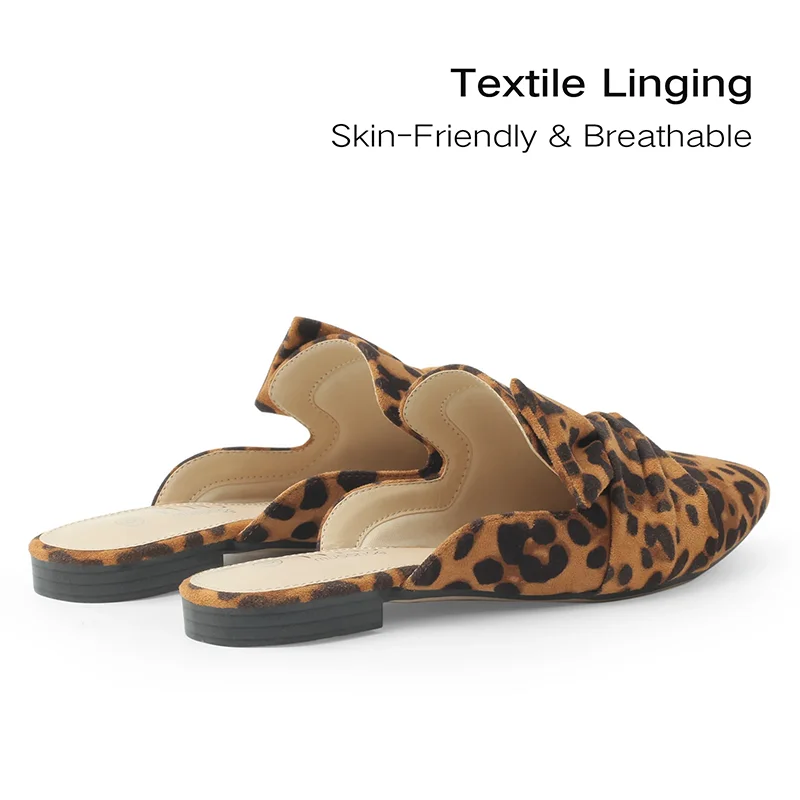
One of the most compelling aspects of breathable open-back loafers is how seamlessly they bridge the gap between fashion and function. These designs prove that style-conscious consumers no longer need to choose between attractive footwear and comfortable options – they can confidently have both.
Modern open-back loafers have evolved far beyond basic designs to include a stunning variety of fashion-forward interpretations. From minimalist leather slides to ornate embellished mules, the open-back format has become a canvas for creative expression while maintaining its core breathability benefits. This evolution has made them versatile enough to complement virtually any outfit, from casual jeans to sophisticated dresses.
The styling flexibility of these shoes extends across multiple contexts:
- Casual settings with relaxed denim or shorts
- Business casual environments with tailored pants or skirts
- Weekend social gatherings with fashionable dresses
- Light travel days when comfort and style are equally important
Creating polished yet comfortable business casual loafer outfits becomes significantly easier with breathable open-back options. The refined appearance maintains professional standards while the enhanced comfort supports productivity throughout demanding workdays. This versatility makes them a particularly smart investment for the fashion-conscious professional.
Premium brands have mastered the art of developing breathable materials and constructions that maintain an elegant aesthetic. Fine leathers with natural breathability properties can be crafted into sophisticated silhouettes that look as good as they feel. Details like refined stitching, quality hardware, and thoughtful proportions ensure these comfortable options never appear casual or unpolished.
The contemporary appeal of breathable open-back loafers reflects a broader shift in consumer priorities toward footwear that supports active lifestyles without compromising on style. As versatile statement pieces, they represent the perfect synthesis of form and function.
Important Considerations When Choosing Open-Back Loafers
While the breathability benefits of open-back loafers are substantial, these designs do present certain considerations that differ from traditional closed-back footwear. Understanding these factors helps ensure you select the right pair for your specific needs and usage scenarios.
Support and Stability Differences
Open-back loafers provide less heel support and overall foot stability compared to their closed-back counterparts. This structural difference means:
- The foot relies more heavily on the front portion of the shoe for stability
- The absence of heel counter reduces lateral support during quick movements
- The foot must engage slightly differently to keep the shoe in place while walking
- Some wearers may need to adjust to the different walking mechanics
For most casual and professional settings, these differences pose no significant issues. However, they become more relevant when considering specific activities or extended wear scenarios.
Activity Limitations
The open-back design works exceptionally well for certain situations but presents limitations for others:
- Not ideal for extensive walking on uneven terrain
- Less suitable for activities requiring sudden directional changes
- May require more careful navigation of stairs and escalators
- Not recommended for situations requiring sustained brisk walking
Environmental Considerations
Weather and environment play important roles in determining when open-back loafers are most appropriate:
- Ideal for warm, dry conditions where breathability provides maximum benefit
- Less suitable for rainy or muddy environments where water may enter from the back
- May require seasonal rotation in regions with extreme weather variations
- Consideration should be given to indoor versus outdoor usage scenarios
Professional Setting Appropriateness
Questions about whether it’s unprofessional to wear loafers without socks arise frequently with open-back styles. The answer depends largely on workplace culture, industry standards, and the specific design of the loafers. Generally, more refined leather or suede open-back loafers in neutral colors maintain professional appearance standards when paired appropriately with business attire.
Material Durability Factors
The breathability advantages of certain materials may come with specific care requirements:
- Some highly breathable natural materials may show wear more quickly
- Lighter-colored breathable fabrics may require more frequent cleaning
- The open-back design may expose certain materials to different wear patterns
- Flexible constructions that enhance comfort might have different longevity profiles
Understanding these considerations helps set realistic expectations and ensures you select open-back loafers appropriate for your specific lifestyle needs.
The Buyer’s Guide to Selecting the Most Breathable Open-Back Loafers
Selecting the perfect breathable open-back loafers requires evaluating several key factors that directly impact their performance and comfort. This comprehensive guide helps you navigate the options to find your ideal pair:
- Material Assessment for Maximum Breathability
Examine upper materials closely, prioritizing those with natural porosity and moisture-management properties. Full-grain leather, quality suede, and natural textiles typically offer superior breathability compared to synthetic alternatives. Look for visible pore structures in leather or loose weaves in textiles that indicate better air permeability.
- Construction Quality Indicators
Evaluate how the shoe is assembled, focusing on stitching consistency, material junctions, and overall craftsmanship. Quality construction ensures the breathable materials perform as intended without premature breakdown. Reinforced stress points should maintain flexibility without compromising ventilation.
- Insole and Footbed Evaluation
Test the insole by pressing firmly to assess its cushioning and resilience. Optimal breathable footbeds combine comfort with moisture-wicking properties. Cork, leather, or open-cell foam materials generally offer better breathability than dense synthetic options. Removable insoles provide additional versatility for personalization.
- Fit Considerations Specific to Open-Back Designs
Without rear support, proper fit becomes even more critical. The shoe should hug the foot securely across the widest part while allowing toes to spread naturally. Too loose, and the foot will slide forward uncomfortably; too tight, and air circulation benefits diminish. Consider sizing down slightly if between sizes, as open-backs tend to feel more generous than closed designs.
- Weight and Flexibility Assessment
Lighter weights generally correlate with better breathability. Flex the shoe gently to test its pliability—a more flexible construction typically allows better airflow during natural walking movements. Excessive rigidity can restrict the natural foot motion that helps circulate air.
Women's Comfortable Flat Loafers, Women's Leopard Print Loafers, Women's Low Heel Loafers
$82.50 Select options This product has multiple variants. The options may be chosen on the product pageWomen's Comfortable Flat Loafers, Women's Leather Flat Loafers, Women's Round Toe Flat Loafers
$124.88 Select options This product has multiple variants. The options may be chosen on the product pageWomen's Loafer Mules, Women's Suede Flat Loafers
$190.23 Select options This product has multiple variants. The options may be chosen on the product pageWomen's Classic Driving Loafers, Women's Classic Penny Loafers, Women's Comfortable Flat Loafers
$75.28 Select options This product has multiple variants. The options may be chosen on the product pageWomen's Black Flat Loafers, Women's Classic Penny Loafers, Women's Comfortable Flat Loafers
$75.28 Select options This product has multiple variants. The options may be chosen on the product page- $220.29 Select options This product has multiple variants. The options may be chosen on the product page
Exploring versatile footwear mule loafers provides excellent context for understanding how these styles can adapt to various needs while maintaining breathability benefits. The most versatile options balance refined aesthetics with practical comfort features that support daily wear.
When evaluating product descriptions, look beyond marketing terms to identify specific breathability features. Phrases like “perforated design,” “natural materials,” and “moisture-wicking lining” indicate genuine breathability enhancements rather than merely stylistic elements.
Expert Care for Your Breathable Open-Back Loafers
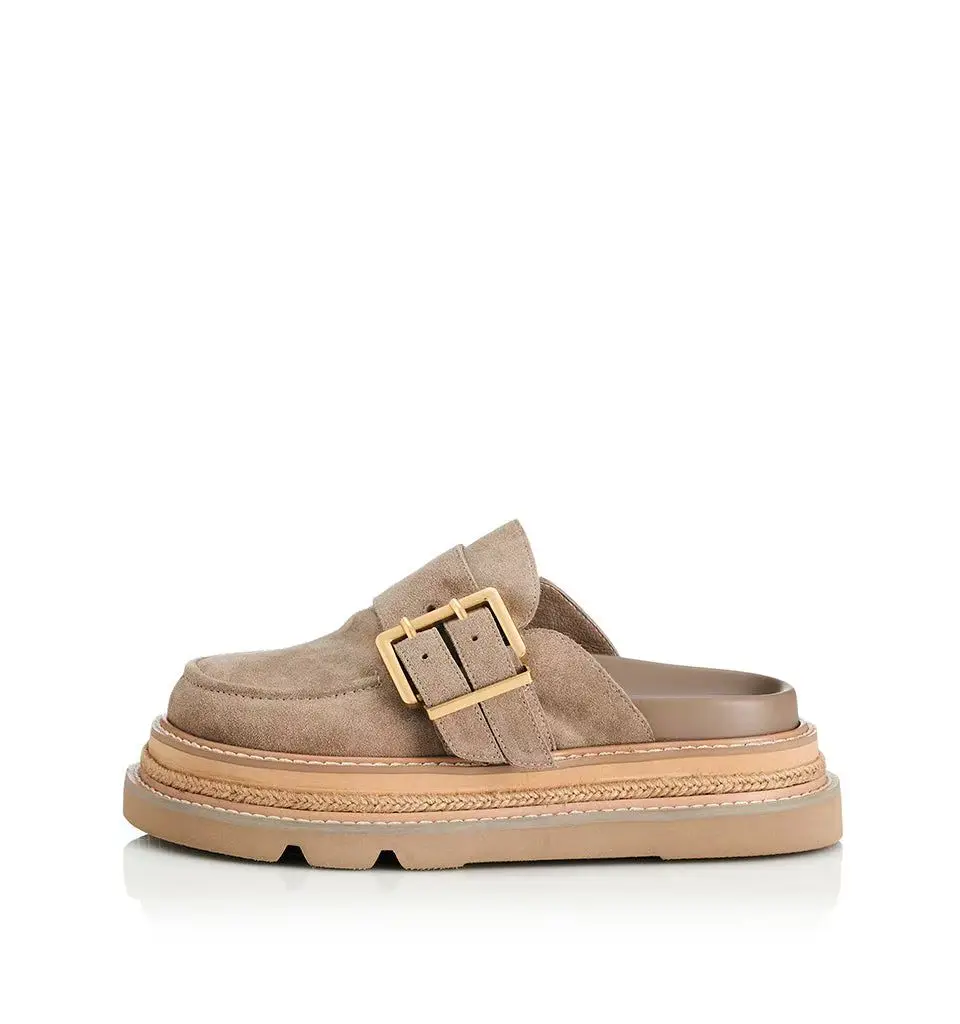
Proper care not only extends the life of your breathable open-back loafers but also preserves their breathability features. Different materials require specific approaches to maintain their air-permeable qualities while protecting their appearance and structure.
Material-Specific Cleaning Approaches
For Leather Varieties:
* Clean surface dust and dirt with a soft brush or slightly damp cloth
* Use specialized leather cleaners formulated for the specific finish (full-grain, patent, etc.)
* Apply leather conditioner sparingly, allowing proper absorption time
* Avoid oversaturation that could clog natural pores in the material
For Suede and Nubuck:
* Brush gently with a dedicated suede brush to maintain nap and remove surface debris
* Use specialized suede erasers for spot cleaning
* Apply suede protector sprays specifically formulated to maintain breathability
* Never saturate with water or liquid cleaners
For Fabric Options:
* Test cleaning solutions on an inconspicuous area first
* Use gentle cleansers appropriate for the specific textile
* Brush dried mud or dirt away before applying any liquid cleaners
* Consider specialized fabric cleaning foams that lift dirt without excessive moisture
Drying Techniques That Preserve Breathability
Proper drying is crucial for maintaining breathability properties:
- Allow shoes to dry naturally at room temperature
- Avoid direct heat sources that can damage materials and adhesives
- Insert unprinted paper (not newspaper) to absorb moisture from the inside out
- Rotate between multiple pairs to allow complete drying between wears
- Consider using shoe trees made of cedar or other moisture-absorbing materials
Storage Practices for Maintained Airflow
How you store your open-back loafers between wears affects their long-term breathability:
- Store in well-ventilated areas away from direct sunlight
- Use breathable dust bags rather than airtight plastic containers
- Insert shoe trees or tissue paper to maintain shape and absorb residual moisture
- Allow adequate space between pairs rather than stacking or compressing
The diverse womens mule slingback loafers available today require attention to their specific material and construction details when developing a care routine. Following these care practices ensures your breathable open-back loafers remain comfortable, attractive, and functional throughout their lifespan.
Frequently Asked Questions About Open-Back Loafer Breathability
Which materials provide the best breathability in open-back loafers?
Natural materials typically offer superior breathability, with full-grain leather, suede, and canvas ranking highest. Among leathers, unlined and perforated varieties provide additional ventilation benefits. Synthetic materials with engineered microperforations can also perform well, though they generally don’t match the natural moisture management of quality leather or textiles.
Are open-back loafers appropriate for all seasons?
Open-back loafers excel in warm weather but can be worn year-round in many climates. They’re ideal for spring through fall and can work well indoors during winter months. In extremely cold or wet conditions, closed-back alternatives may be more practical. Many wearers find womens comfortable flat loafers in open-back styles perfect for transitional seasons.
How can I maximize breathability if I have particularly sweaty feet?
For those with excessive perspiration, choose loafers with leather or cork footbeds, avoid synthetic linings, and select styles with perforated or woven uppers. Consider using absorbent insoles designed specifically for moisture control and allow shoes to completely dry between wears. Alternating between multiple pairs provides better overall foot health and shoe longevity.
Do socks diminish the breathability benefits of open-back loafers?
Wearing socks changes the breathability equation but doesn’t necessarily eliminate benefits. Choose thin socks in natural, moisture-wicking materials like cotton, linen, or specialized no-show varieties designed for breathability. These can actually enhance comfort by providing a buffer between foot and shoe while still allowing adequate ventilation through the open back.
How do I maintain breathability in my loafers over time?
Regular cleaning prevents pore clogging that can reduce breathability. Avoid excessive use of waterproofing products that might seal natural ventilation pathways. Let shoes dry completely between wears and use cedar shoe trees to maintain shape and absorb residual moisture. Rotate between multiple pairs to extend the life of each and maintain optimal breathability properties.

